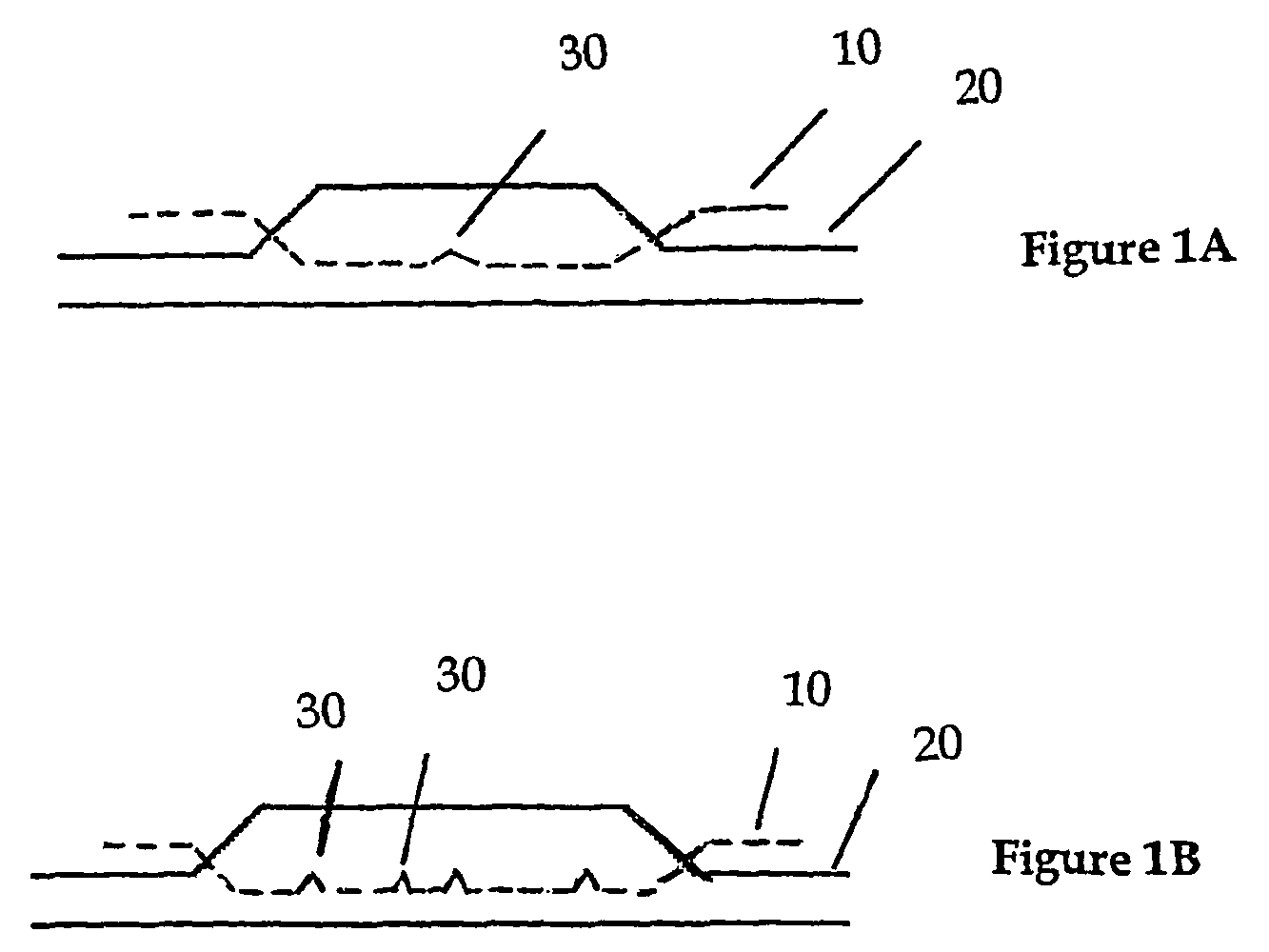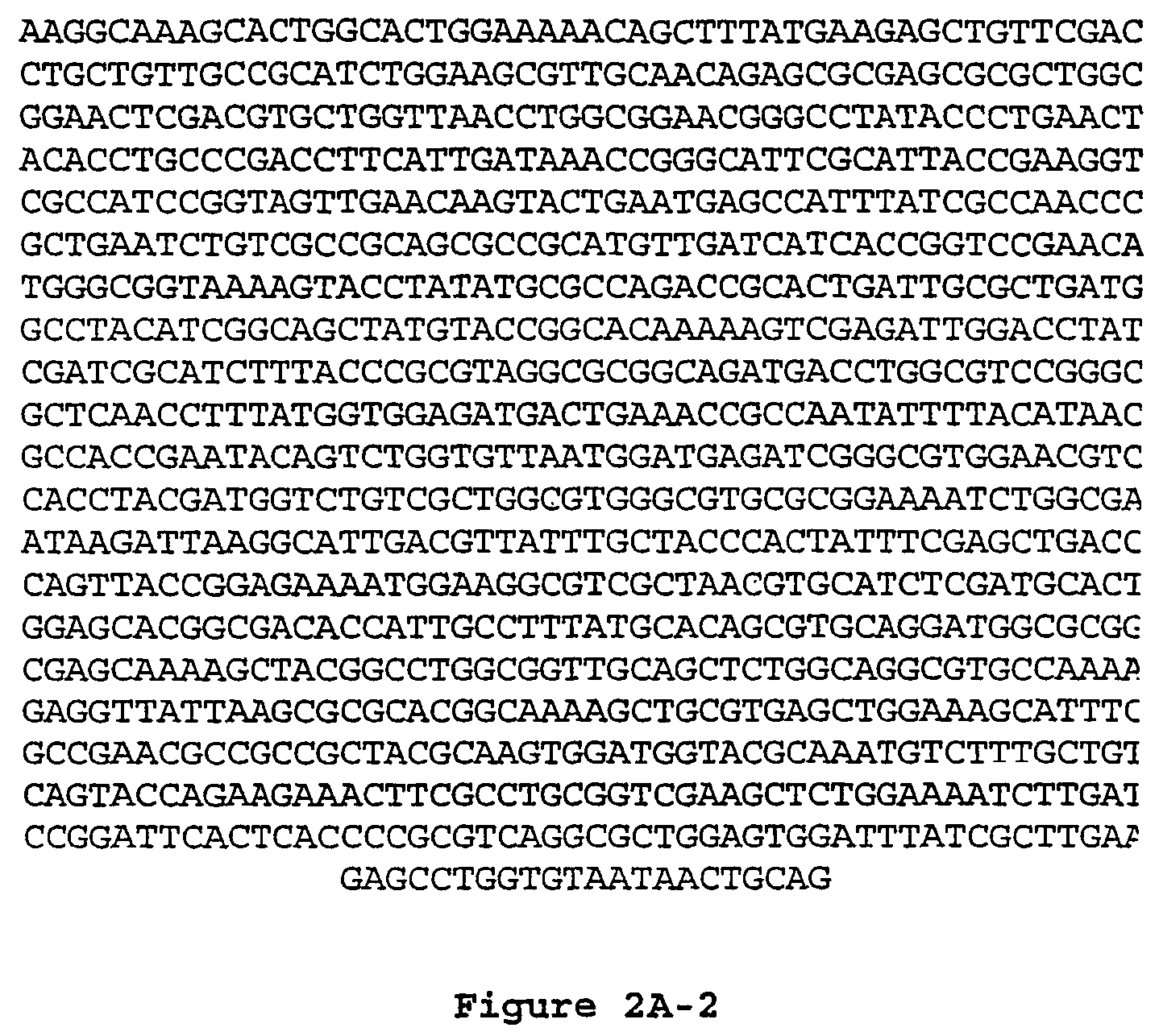Modifying DNA recombination and repair
a dna recombination and repair technology, applied in the field of modifying dna recombination and repair, can solve the problem of taking an excessively long time for hypermutable cells to recombine, and achieve the effects of improving the affinity for mismatches, improving stability, and improving the properties of affecting activity
- Summary
- Abstract
- Description
- Claims
- Application Information
AI Technical Summary
Benefits of technology
Problems solved by technology
Method used
Image
Examples
example 1
Cloning and Evaluation of MutS. MutL and MutH Genes
[0124]Genes and genetic elements of interest were cloned using specific oligonucleotides designed to prime DNA synthesis in a PCR reaction with either cDNA or genomic DNA (gDNA) from the appropriate species as template. The primers were designed to incorporate convenient restriction sites into the amplicon to facilitate initial cloning of the gene or genetic element and subsequent subcloning into various expression or analytical vectors. Genes and genetic elements cloned and the oligonucleotide primers used to achieve this are described below.
[0125]PCR conditions were as described (Current Protocols in Molecular Biology. Ausubel, F M, Brent, R, Kingston, R E, Moore, D D, Seidman, J G, Smith, J A, Struhl, K eds. 2001. 1987. John Wiley and Sons, Inc) or as recommended by the supplier of the thermostable DNA polymerase Pfu (Stratagene), Pfx (Gibco BRL) or Taq (Pharmacia). PCR reactions were conducted using a thermocycler (Perkin-Elmer ...
example 2
Functionality of Engineered Prokaryotic Mismatch Repair Proteins
[0154]To promote localisation of prokaryotic MMR proteins in the nucleus of eukaryotic cells the proteins may be engineered to encode a nuclear localisation sequence. (NLS). A NLS is a sequence of amino acid residues resident in many eukaryotic proteins that function in the host cell nucleus. The NLS interacts directly or indirectly with nuclear envelope proteins that facilitate transport of proteins from the cytosol, where protein synthesis occurs, into the nucleus.
[0155]Protein function can be very sensitive to perturbations of their folding and three-dimensional structure. Addition of amino acid residues to proteins may often cause structural perturbations that inhibit or even prohibit function. Therefore when engineering proteins, such as modifying one to encode an NLS, it is important to confirm functional activity is retained in the engineered protein.
[0156]To illustrate prokaryotic MMR proteins retain function in...
example 3
Effect of Prokaryotic Mismatch Repair Proteins on Mutation Frequency in Eukaryotic Cells
[0163]Incorporation of additional, insufficient or incorrect nucleotide(s) often occurs during DNA replication. These mistakes in the newly synthesized stand are generally corrected by the proofreading activity of DNA polymerase. However, these mistakes may escape the proofreading activity and result in structural distortions of the DNA helix. These distortions, or mismatches, are recognized and repaired by the mismatch repair (MMR) machinery (Harfe, B D, Jinks-Robertson, S: DNA Mismatch Repair And Genetic Instability. Annu. Rev. Genet. 34: 359, 2000; Marra, G, Schar, P: Recognition of DNA alterations by the mismatch repair system. Biochem. J. 338: 1-13, 1999). Disruption of the function of MMR processes can thus inhibit repair of replication errors leading to stabilization of the mutations and their passage to subsequent generations.
[0164]In eukaryotes the recognition of mismatches is carried ou...
PUM
| Property | Measurement | Unit |
|---|---|---|
| volume | aaaaa | aaaaa |
| volume | aaaaa | aaaaa |
| length | aaaaa | aaaaa |
Abstract
Description
Claims
Application Information
 Login to View More
Login to View More - R&D
- Intellectual Property
- Life Sciences
- Materials
- Tech Scout
- Unparalleled Data Quality
- Higher Quality Content
- 60% Fewer Hallucinations
Browse by: Latest US Patents, China's latest patents, Technical Efficacy Thesaurus, Application Domain, Technology Topic, Popular Technical Reports.
© 2025 PatSnap. All rights reserved.Legal|Privacy policy|Modern Slavery Act Transparency Statement|Sitemap|About US| Contact US: help@patsnap.com



